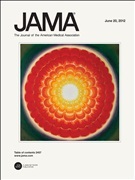
Trauma
Nail versus plate fixation for displaced, extra-articular distal tibial fractures
JAMA. 2017 Nov 14;318(18):1767-1776321 patients with a displaced, extra-articular distal tibial fracture were randomized to fixation with either an intramedullary nail or a locking plate. Patients were followed up for the primary outcome of disability at 3, 6, and 12 months, secondary outcomes included function, quality of life, complication rate, and reoperation rate. For disability, significantly lower scores were observed in the IMN group compared to the LP group at 3 months, though differences at 6 and 12 months were not statistically significant. For function, significantly high scores were observed in the IMN group compared to the LP group at 3 and 6 months, but the difference at 12 months was not significant. Rates of complications and reoperations did not significantly differ between groups during follow-up.
Unlock the full article
Get unlimited access to OrthoEvidence with a free trial
Start TrialCritical appraisals of the latest, high-impact randomized controlled trials and systematic reviews in orthopaedics
Access to OrthoEvidence podcast content, including collaborations with the Journal of Bone and Joint Surgery, interviews with internationally recognized surgeons, and roundtable discussions on orthopaedic news and topics
Subscription to The Pulse, a twice-weekly evidence-based newsletter designed to help you make better clinical decisions
Exclusive access to original content articles, including in-house systematic reviews, and articles on health research methods and hot orthopaedic topics
Or continue reading this full article
Register Now

Subscribe to "The Pulse"
Evidence-Based Orthopaedics direct to your inbox.




































